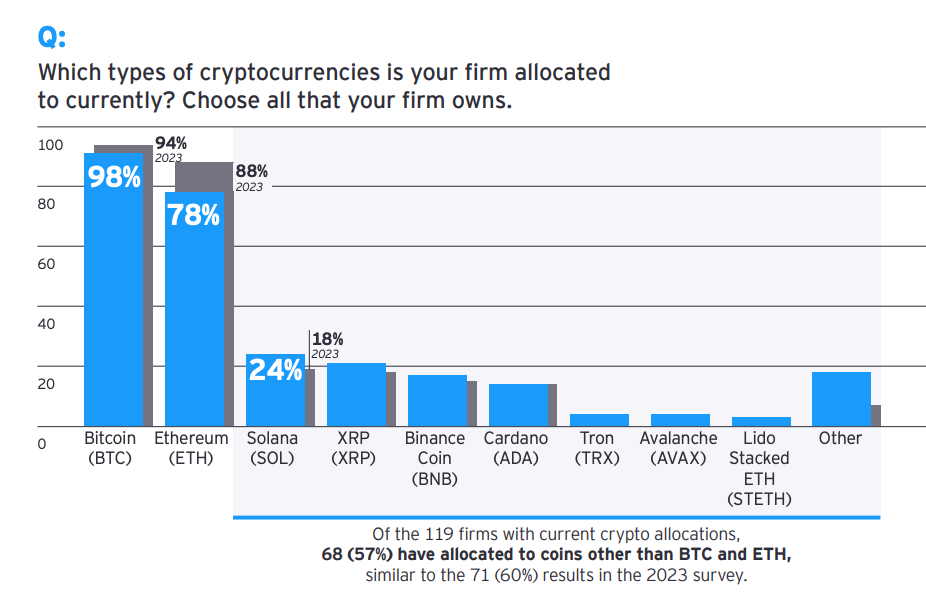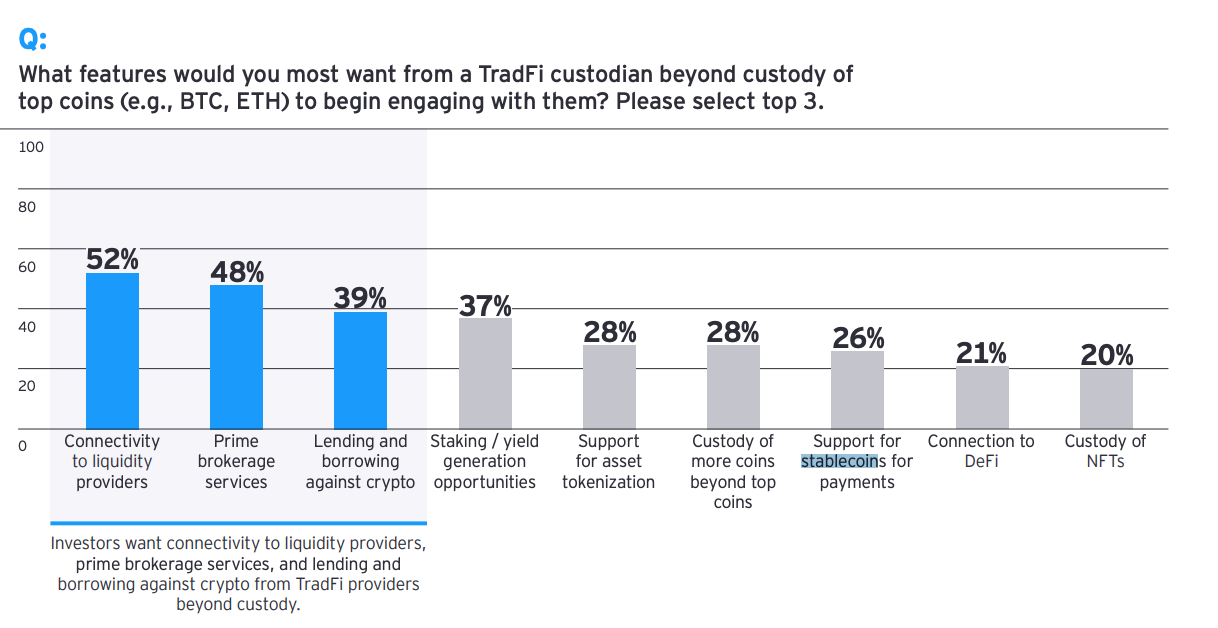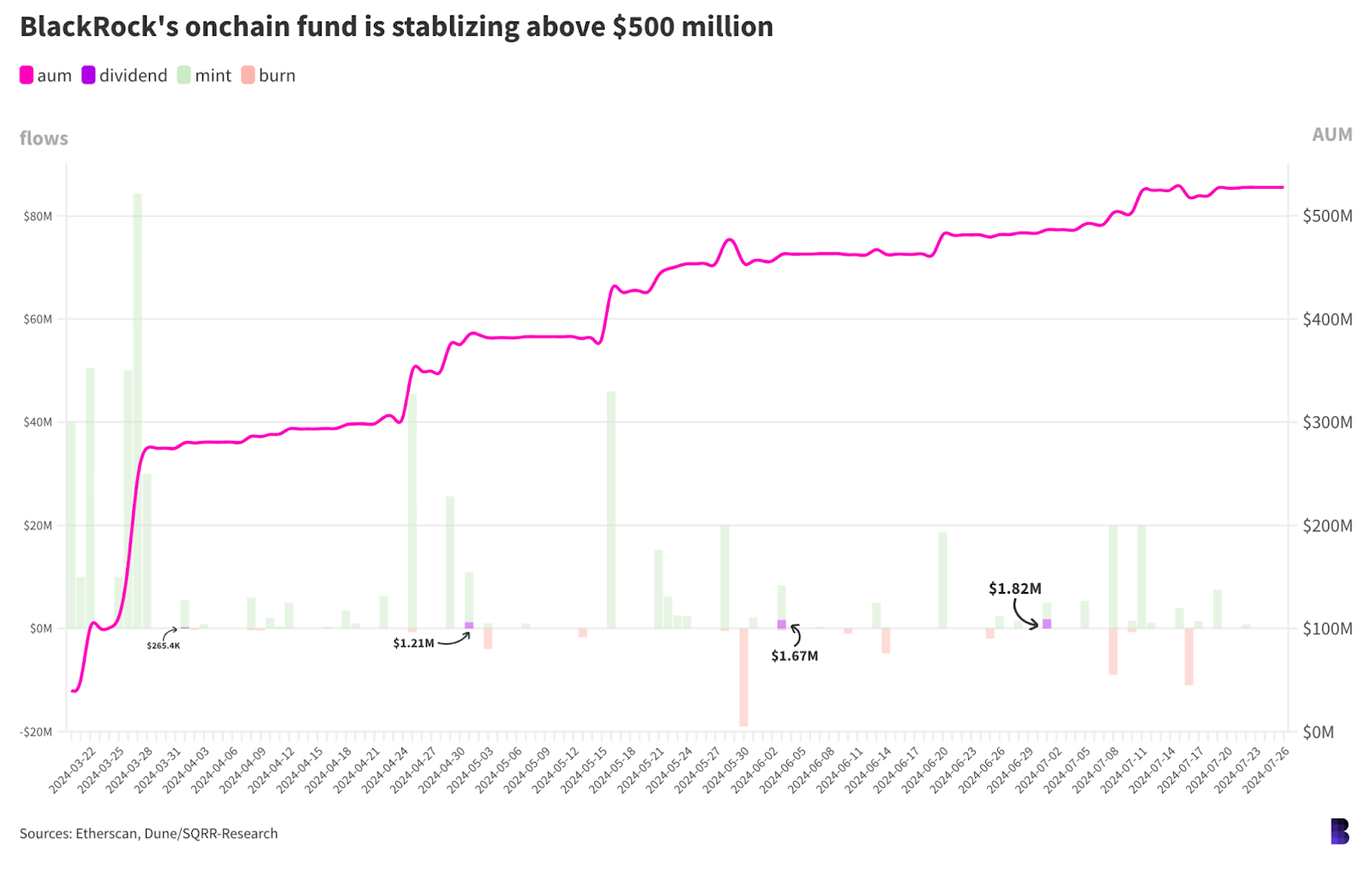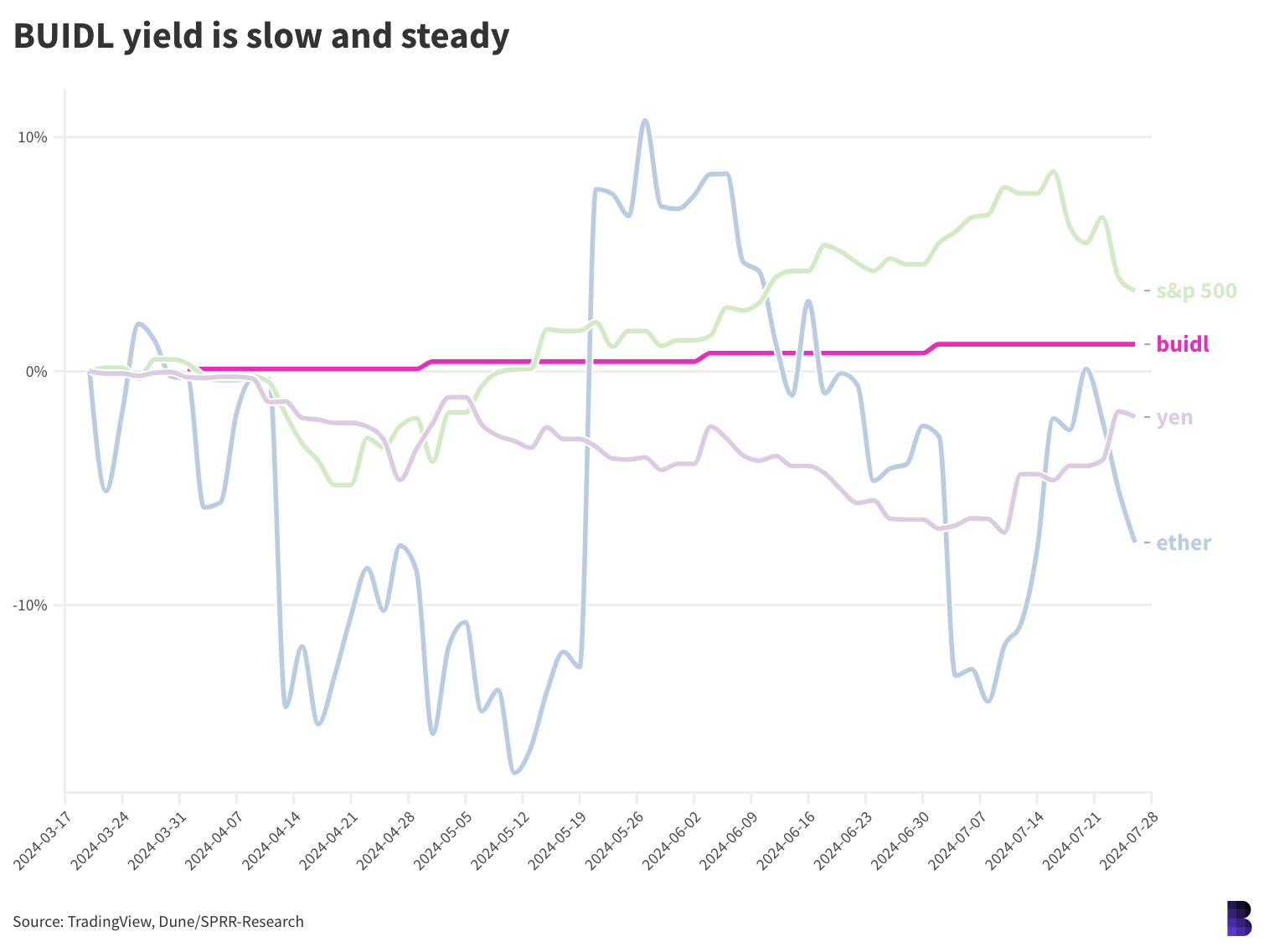Today, enjoy the Empire newsletter on Blockworks.co. Tomorrow, get the news delivered directly to your inbox. Subscribe to the Empire newsletter.
The age of adoption
55%.
That’s how many surveyed institutional investors plan to up their crypto allocations in the next two to three years alone.
The survey, conducted by EY earlier this summer, gives insight into how the institutions are approaching the crypto space. And, mind you, this was conducted before we even knew that ETH ETFs were on the table.
“We may look back on 2023 as the year digital assets firmly planted roots in the challenging soil of traditional finance,” EY wrote.
Fast forward to now, and Wisconsin’s pension fund now includes millions of dollars worth of bitcoin ETFs. In case you’re not ‘boots on the ground’ in Nashville, Jersey City Mayor Steven Fulop on Thursday announced that there was no question that both crypto and bitcoin were “here to stay” and that the two “won” over the doubters.
Most importantly though: Jersey City’s pension fund is following in Wisconsin’s footsteps and plans to allocate a similar amount by the end of the summer (Wisconsin’s is at 2%).
“I do believe blockchain is amongst the most important new technology innovations since the internet,” Fulop added.
So let’s focus on the funds those pension funds are buying — and by that I mean the bitcoin ETFs. EY’s survey had 68% of respondents say they plan to buy them, and just over 60% want exposure to crypto through registered vehicles versus spot products.

To put these percentages in perspective: EY surveyed over 270 institutional investors. The majority were either institutional asset managers and asset managers, but there were some RIAs and hedge funds surveyed as well.
“To date, while 62% of investors have allocated greater than 1% of their assets to crypto, the survey shows that percentage increasing to 81% two-to-three years out, showing more than a 30% increase in the investors willing to commit more than 1% of assets to crypto,” the report said.
“When it comes to family offices in particular, the appetite for crypto is even greater, with 24% allocating more than 5% of their investments.”
EY’s Prashant Kher told me that 59% of respondents also said they planned to launch a crypto fund in the next two years, or, if you bump their AUM to $500 billion (yes, with a B), then that percentage shoots up to 90%.
The bigger the AUM, the more likely they are to have a larger allocation. And those hedge funds I mentioned? They’re looking to be the “most aggressive in increasing allocations.”
It’s not just bitcoin or the ETFs getting all of the love. Tokenized assets are attracting lots of attention from these firms.
“I think the fund space is a quite interesting one to watch, where we’ve seen some successful launches with the money market funds and treasuries. We know of others that are working on tokenizing alternatives. And then the second angle in tokenization is the blockchain-based payments and tokenized cash. And how you’re seeing pilots with different banks launching their own tokenized cash,” Kher said.

As for what these firms want: The majority said connectivity to liquidity providers is first and foremost, followed closely by prime brokerage services. 26% of the firms are looking for stablecoin payment support.
We’re now past halfway through the year, and institutional adoption continues to show strength. Now we’ll just have to see how this narrative pushes our current market cycle forward.
— Katherine Ross
Data Center
- Over $3 billion has net flowed into bitcoin ETFs so far in July compared to $666 million in all of June.
- Ether ETFs have otherwise seen $179.1 million of net outflows across its first three days of trading, per Farside Investors data.
- BTC and ETH have bounced, up 5% and 2.5% in the past day, respectively (BTC: $67,350; ETH: $3,250).
- POPCAT, TAO and AAVE are rebounding the hardest, between 16% and 13.3%.
- Another all-time high for Ethereum validators: 1,044,670 with 4,300 in the queue.
BlackRocked
BlackRock’s tokenized money market on Ethereum, BUIDL, is paying out steady yield entirely on crypto rails.
And those dividends are growing. BlackRock fund managers tally yields each day and distribute them on the first business day of every month.
Similar to stablecoins like Tether, USDC and DAI, the yield mostly comes from US Treasurys and various repurchase agreements.
Fund contributors receive their share of dividends in BUIDL tokens. BUIDL can be redeemed 1:1 for USDC through a smart contract built with issuer Circle, with payouts available round-the-clock.
To date, the blockchain data shows BUIDL paying out yield to 15 different addresses, although that also includes RWA protocol Ondo and a small amount to restaking platform Karak.
Initial participants include Coinbase, Fireblocks, BitGo and Anchorage Digital Bank, according to a spokesperson from Securitize, which handles much of BUIDL’s infrastructure.

Since its launch in March, BUIDL has paid:
- $265,400 at the start of April.
- $1.21 million in May.
- $1.67 million in June
- $1.82 million in July
The rising dividends match the growth in BUIDL’s AUM — now $527.6 million, up from just over $280 million at the time of the first payout.
BUIDL holders have otherwise opted to cash in $55.7 million for USDC since its launch in March.
All told, BUIDL is performing well for token holders. Its cumulative yield to date is 1.15% — paid over the space of four months — while ether is down 7.3%.

The S&P 500 is outwise up almost 3.5% over the same period while the yen has slipped about 2%.
If it wasn’t already clear, BlackRock’s fund is aptly named.
It’s building capital for its investors slowly and steadily — a nice change from what usually goes on in crypto.
— David Canellis
The Works
- X has scrapped hashtag emojis, including bitcoin and other crypto logos.
- Bancolombia Group’s Wenia is integrating Chainlink’s Proof-of-Reserve to bring transparency to the COPW stablecoin’s Colombian peso reserves.
- $4 million worth of crypto has been donated to former President Donald Trump’s campaign from donors such as Ripple’s Stuart Alderoty and BitGo’s Mike Belshe, CNBC reported.
- The United Kingdom granted financial technology firm Revolut a banking license.
- Marathon Digital said it bought $100 million worth of bitcoin, to hold over 20,000 bitcoin on its balance sheet.
The Riff
Q: Is this the final form of institutional participation in crypto?
Final is, well, too final of a word to use.
Instead, I’d probably say that this is the middle stage of institutional participation. We’re finally starting to see real interest, and it’s not just conversations in a conference room anymore.
Things are finally actually happening, which makes all the difference. But I don’t think we’ll be anywhere close to the finish line until the unfriendly — and uncertain — regulatory environment in the US is cleared up.
It’s, unfortunately, simple and complicated at the same time. But until there’s clarity, we’ll keep seeing the institutions that really want to take part be very creative about how they get involved with the overall industry.
— Katherine Ross
The way it’s going, definitely not. Two things crypto needs from institutions to help reach its true final form:
- Stock markets that run entirely on a blockchain — with crypto-to-stock trading pairs.
- Tokenized initial public offerings and direct listings that are integrated with traditional stock exchanges.
Bonus points for stablecoins baked into banking apps (especially ones that allow deposits and withdrawals with external, non-bank sources).
Not to mention, home loans and mortgages that don’t penalize for interacting with crypto exchanges and other service providers. Institutions might be chasing exposure to crypto’s growth, but there’s still lots of room to go deeper than that.
— David Canellis
 blockworks.co
blockworks.co
